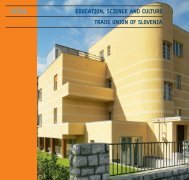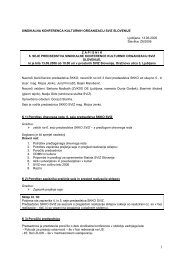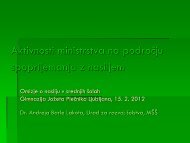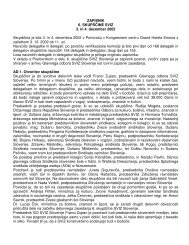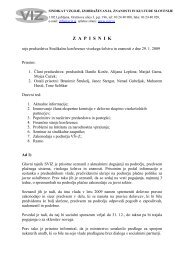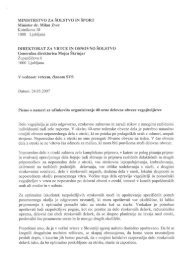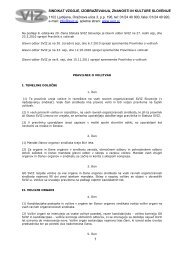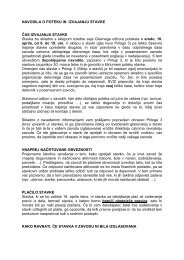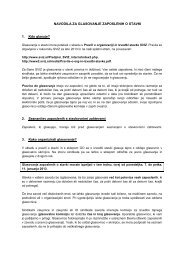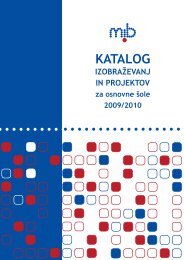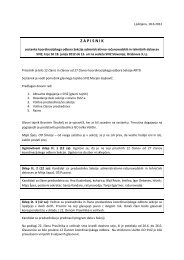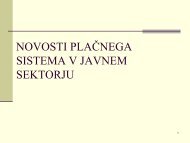Create successful ePaper yourself
Turn your PDF publications into a flip-book with our unique Google optimized e-Paper software.
PROGRAM / PROGRAM<br />
110<br />
By the time Mozart’s widow Constanze put the legacy of her deceased<br />
husband into order for publishing large parts of his horn concertos had been<br />
lost. Passages from the two concertos in E-flat Major (K 417 and K 495) were<br />
missing, and the copies of these works were to a large extent unreliable.<br />
There are, in fact, very few horn concertos in Mozart’s opus, and there are<br />
many formal, harmonic and melodic similarities between the extant works.<br />
Often they were written on reserve or surplus manuscript paper, and the<br />
haste of their execution is evidenced by undetermined articulation marks<br />
or tempi. Although the composer himself may not have attributed a great<br />
deal of importance to these compositions relative to those of other musical<br />
genres, today they count amongst the great achievements of the musical<br />
literature for the horn.<br />
Mozart became familiar with the horn at a very early age, as his family was<br />
often visited by Joseph Leutgeb (Leitgeb), a horn player of the court chapel<br />
and a friend of Mozart’s father. With Leopold’s financial assistance Leutgeb<br />
gained his independence and opened a cheese shop in Vienna, while at the<br />
same time supplementing his income as an occasional ‘freelance artist’ – a<br />
horn player. When the young Mozart arrived in Vienna he made Leutgeb’s<br />
acquaintance again and wrote several works for horn for him – not without<br />
a hint of mischief, or at least playfulness, as in these works he always pokes<br />
fun at Leutgeb to some extent. Thus the manuscript for the Horn Concerto<br />
No. 2 from 1783 bears the dedication: “Wolfgang Amadeus Mozart took pity<br />
on Leitgeb, a foolish ass, ox and madman, in Vienna, 27 May 1783”. Mozart’s<br />
‘pity’ was nonetheless well-intentioned, as the work abounds with freshness<br />
and inspiration, offering the soloist sufficient manoeuvring space to display<br />
his skill. The introductory sonata movement is followed by a cantabile Andante,<br />
in which the soft colour of the instrument stands out. The concerto<br />
concludes with a lively rondo in the popular hunting style.<br />
One year earlier, Mozart had written the concerto that he most frequently<br />
performed himself: the Piano Concerto No. 12 in A Major. The frequency of<br />
its performance is evidenced by the fact that for each movement there are<br />
two extant cadenzas; furthermore, Mozart replaced the concluding rondo<br />
with a new movement, today’s K 386. In the spring of 1783 he revised the<br />
work, along with two other piano concertos that had been written around<br />
the same time (K 413 and K 415). The concerto was written soon after the<br />
composer’s arrival in Vienna, at the time that Mozart achieved recognition<br />
with The Abduction from the Seraglio, but the precise reason for the work’s<br />
composition is not known. In a letter to his father, Mozart described the piece<br />
as “something between too heavy and too light”, which nonetheless pleases<br />
the ear. It is true that at this time Mozart pleased the public – his concerts were<br />
well attended. The composer continued to take advantage of the whimsical<br />
favour of the public in the following years, when some of his greatest piano<br />
concertos were written.<br />
The charm of the Piano Concerto No. 12 in A Major lies primarily in the fine<br />
detail woven into it. The work’s three movements are contrasting in character.<br />
The first movement, a sonata movement with a double exposition, is luminous



